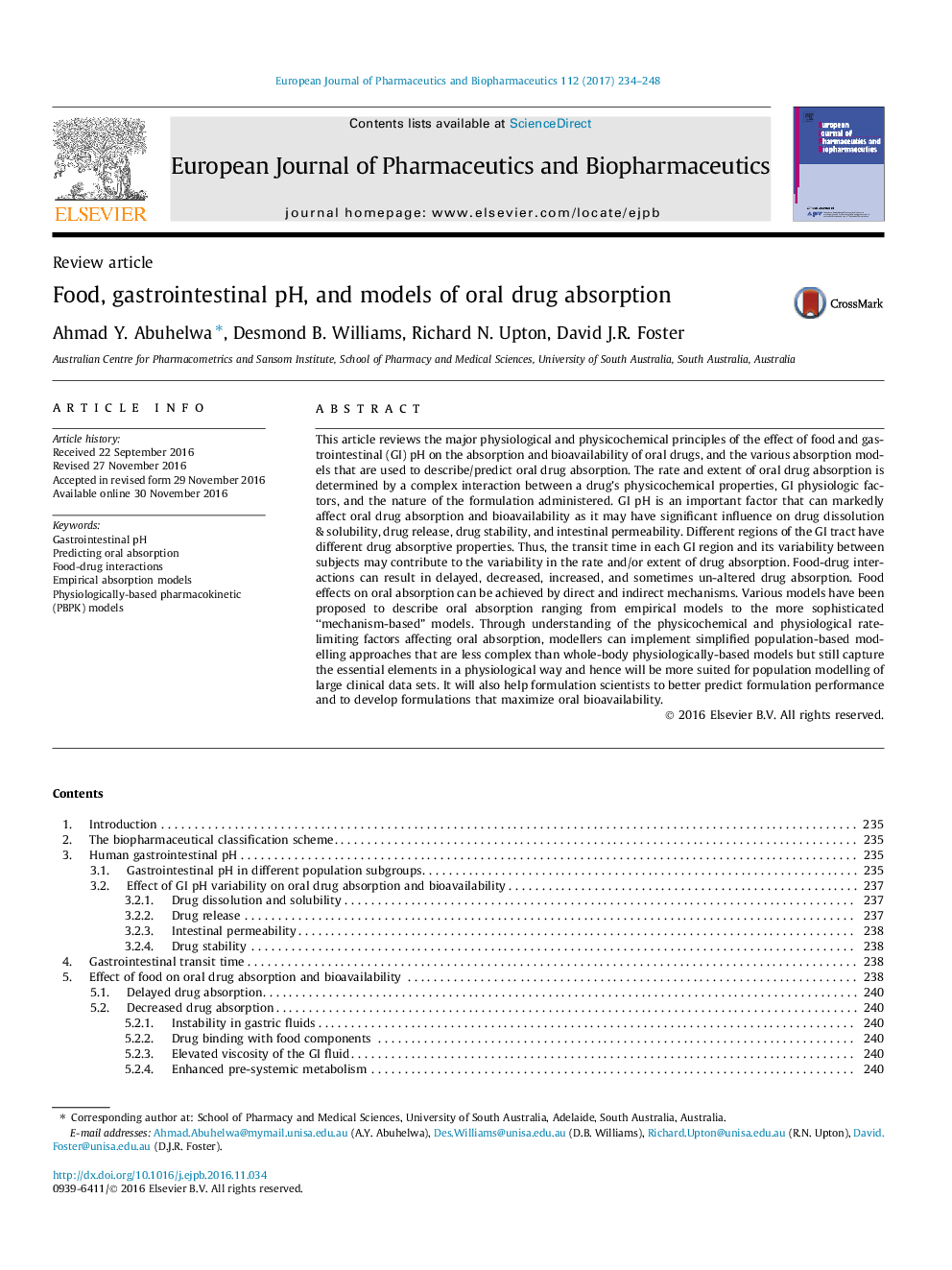| کد مقاله | کد نشریه | سال انتشار | مقاله انگلیسی | نسخه تمام متن |
|---|---|---|---|---|
| 5521646 | 1545311 | 2017 | 15 صفحه PDF | دانلود رایگان |

This article reviews the major physiological and physicochemical principles of the effect of food and gastrointestinal (GI) pH on the absorption and bioavailability of oral drugs, and the various absorption models that are used to describe/predict oral drug absorption. The rate and extent of oral drug absorption is determined by a complex interaction between a drug's physicochemical properties, GI physiologic factors, and the nature of the formulation administered. GI pH is an important factor that can markedly affect oral drug absorption and bioavailability as it may have significant influence on drug dissolution & solubility, drug release, drug stability, and intestinal permeability. Different regions of the GI tract have different drug absorptive properties. Thus, the transit time in each GI region and its variability between subjects may contribute to the variability in the rate and/or extent of drug absorption. Food-drug interactions can result in delayed, decreased, increased, and sometimes un-altered drug absorption. Food effects on oral absorption can be achieved by direct and indirect mechanisms. Various models have been proposed to describe oral absorption ranging from empirical models to the more sophisticated “mechanism-based” models. Through understanding of the physicochemical and physiological rate-limiting factors affecting oral absorption, modellers can implement simplified population-based modelling approaches that are less complex than whole-body physiologically-based models but still capture the essential elements in a physiological way and hence will be more suited for population modelling of large clinical data sets. It will also help formulation scientists to better predict formulation performance and to develop formulations that maximize oral bioavailability.
158
Journal: European Journal of Pharmaceutics and Biopharmaceutics - Volume 112, March 2017, Pages 234-248